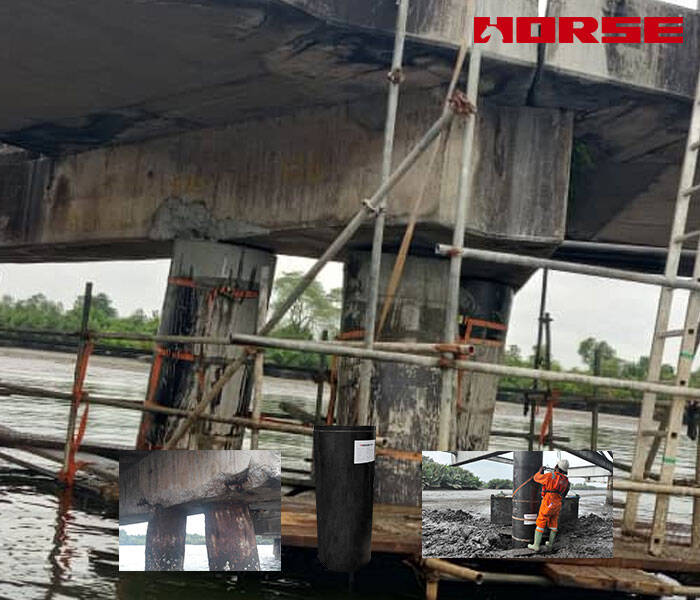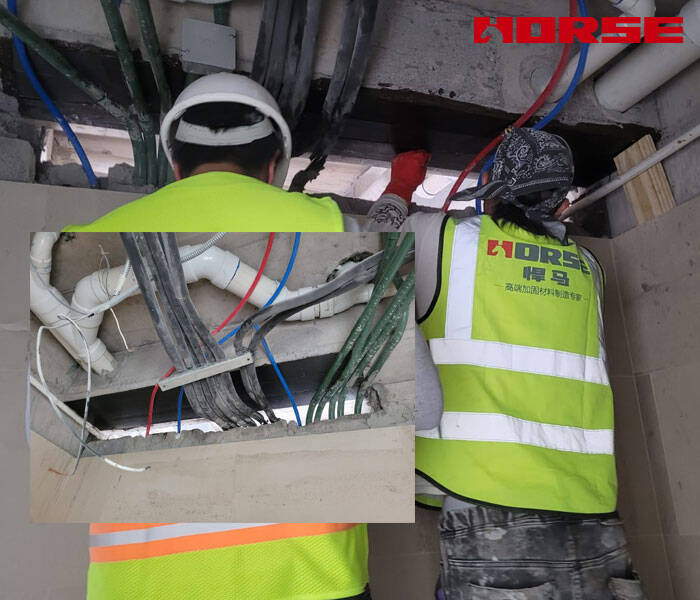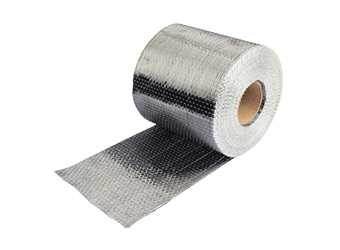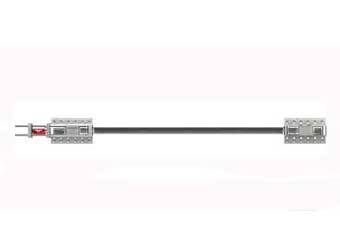Solutions
Horse Construction offers full range of structural strengthening materials with technical supports, documentation supports, products supports, project supports.
What Are The Applications Of Carbon Fiber In Civil Engineering?(2)
What Are The Applications Of Carbon Fiber In Civil Engineering?(1)
Reinforcement for Special Environments and Structures
In special environments such as corrosion, humidity, and extremely confined spaces, carbon fiber's corrosion resistance and lightweight design offer significant advantages. Suitable applications include:

(1) Structural reinforcement in corrosive environments
Applicable problems: Concrete structures (such as columns and equipment foundations) in seaside buildings (high salt spray) and chemical plants (acidic and alkaline environments) have protective layer shedding and structural loosening due to "rebar corrosion"; concrete tanks in sewage treatment plants (such as aeration tanks and sedimentation tanks) have cracks and leaks due to "sewage erosion".
Advantages of carbon fiber: Carbon fiber is resistant to salt spray and acid and alkali (no metal corrosion problem). After carbon fiber cloth is pasted on the surface of the structure, it can form a "protective layer + reinforcement layer", which can not only repair damage but also prevent further corrosion (for example, after the column of a seaside hotel was reinforced, there was no sign of rust for 5 years, while traditional steel reinforcement showed rust expansion after 3 years).
Typical scenarios: Reinforcement of concrete columns of seaside residential buildings, reinforcement of equipment foundations in chemical plants, and anti-seepage reinforcement of sewage treatment plant tanks.

(2) Structural areas with extremely limited space
Applicable problems: Cracks appear on the side walls of elevator shafts (only 800mm wide) due to "uneven settlement"; concrete beams in machine rooms with dense pipelines (such as substations and water pump rooms) (surrounded by pipelines with a spacing of only 300mm) have insufficient bearing capacity, and traditional steel bonding/increasing the cross-section cannot be used for construction.
Advantages of carbon fiber: The thickness of carbon fiber cloth is only 0.111~0.167mm (per layer), which can be applied to the surface of the structure without requiring additional space (for example, to reinforce the side walls of elevator shafts, only a simple scaffolding needs to be set up in the shaft, which does not affect the operation of the elevator); carbon fiber plates can be customized into "narrow plates" (50~100mm wide) and pasted through the gaps between pipes to solve the pain point of "insufficient construction space".
Typical scenarios: reinforcement of cracks in the side walls of elevator shafts, reinforcement of concrete beams in machine room areas with dense pipelines, and repair of the internal structure of underground pipe corridors.
Key Applicability Conditions: "Matching of structural state and material properties" is required.
Even in the aforementioned scenarios, carbon fiber suitability should still be determined based on the following criteria to avoid blindly using it and potentially ineffective results:
Structural damage must be "stable and repairable."
Applicable prerequisites: Structural cracks have stabilized (e.g., crack width no longer increases with temperature or load), and the concrete strength must be ≥C15 (the bond between carbon fiber and concrete depends on the strength of the base layer). If the structure is severely brittle (e.g., concrete rebound strength <C10) or the steel reinforcement corrosion rate is >20%, the base layer must be repaired (e.g., replacing deteriorated concrete, removing rust) before carbon fiber reinforcement is applied.
Not applicable: If the structure is still experiencing "active damage" (e.g., continuous foundation settlement causing cracks to expand by 0.1mm per day), crack arrest must be performed (e.g., by reinforcing the foundation) before carbon fiber reinforcement is applied once the structure stabilizes.
The environment must be compatible with the "properties of carbon fiber composite materials."
Applicable environments: Room temperature (-10°C to 60°C), dry/humid environments (can be used with a water-resistant adhesive), salt spray/weakly acidic/alkaline environments. For high-temperature environments (such as boiler room structures, temperatures > 80°C), use "high-temperature-resistant carbon fiber + high-temperature-resistant adhesive" (temperature resistance ≥ 120°C).
Unsuitable environments: Long-term open flame environments (such as chimney linings and boiler exteriors). Carbon fiber will oxidize and carbonize at temperatures above 300°C, requiring the use of high-temperature-resistant ceramic materials.
The reinforcement objective must be "primarily reinforcement, not load-bearing replacement."
Applicable objectives: Improving the structure's bending, shear, and crack resistance, or repairing local damage (such as cracks). Carbon fiber is used solely as a "reinforcement material" and cannot replace the original structure's primary load-bearing components (e.g., carbon fiber cloth cannot directly replace the steel bars in a concrete beam).
Inapplicable situations: The original structure has completely failed (e.g., a broken concrete column or a plastic hinge in a beam), requiring demolition and reconstruction or combined reinforcement with "steel cladding + carbon fiber." Carbon fiber alone cannot carry the full load.
Typical Inappropriate Use Cases: Avoiding "Performance Mismatch" or "Cost Waste"
The following construction and civil engineering scenarios do not recommend the use of carbon fiber, or require prioritizing other options:
Rough structural surface and weak base strength
If the concrete base is brittle (rebound value < C15), has large areas of hollowing (hollowing rate > 10%), or the masonry surface is uneven (error > 5mm), the carbon fiber will not bond well with the base (easily peeling). The base must be repaired (e.g., by applying epoxy mortar for leveling). Otherwise, it is unsuitable.
Structures that must withstand severe impact
Carbon fiber composites are "highly rigid but also highly brittle." Their impact resistance (such as from heavy objects or vehicles) is far inferior to that of steel (steel absorbs energy through plastic deformation, while carbon fiber easily breaks). Therefore, steel is preferred over carbon fiber for impact-resistant structures such as garage crash bollards, factory equipment crash beams, and bridge guardrails.
Cost-effective, low-performance temporary structures
Temporary construction scaffolding, simple fences, and temporary storage sheds do not require high strength and durability. Using carbon fiber would be cost-prohibitive (for example, the price of a carbon fiber scaffold is 3-5 times that of steel). Traditional materials such as steel pipes and angle steel can be readily substituted.
Structural Components Requiring Conductive or Electromagnetic Shielding
Although pure carbon fiber has a certain degree of conductivity, it is far lower than that of metal (copper's conductivity is over 50 times that of carbon fiber). Furthermore, carbon fiber composites have poor electromagnetic shielding performance. Therefore, for building components requiring conductivity (such as lightning protection grounding brackets) and areas requiring electromagnetic shielding (such as the walls of hospital MRI rooms), metal materials such as copper and aluminum are preferred.
You can find anything here you are in need of, have a trust trying on these products, you will find the big difference after that.

High strength, unidirectional carbon fiber wrap pre-saturated to form a carbon fiber reinforced polymer (CFRP) wrap used to strengthen structural concrete elements.

High strength carbon fiber reinforced polymer (CFRP) strip / laminate / plate for structural strengthening and concrete repair

Prestressed carbon fiber reinforced polymer(CFRP) plate for slab, beam strengthening to increase stiffness, reduce distortion and deflection of members, reduce the cracks, avoid and stop cracking.